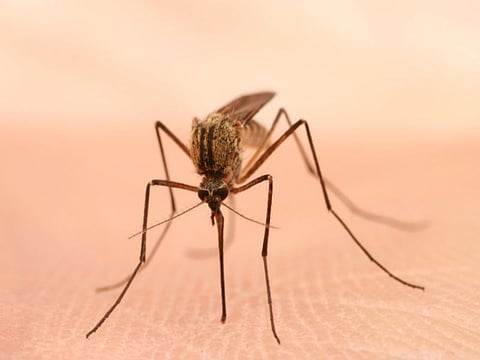Animal, Bug Bites a Billion-Dollar Burden
TUESDAY, Dec. 11, 2018 (HealthDay News) -- The bites of insects, spiders and dogs are a $1 billion yearly drain on the U.S. health care system, a new study has calculated.
And climate change is only going to make matters worse, researchers contend.
Attacks by mountain lions, bears and alligators get the most press, but the tiniest critters create the most work for emergency room doctors. Bug bites and stings account for more than half of all animal-related trips to the ER, the study authors discovered.
Bites from ticks, mosquitoes, fleas and spiders caused 41 percent of animal-related injuries, while another 13 percent of ER visits were prompted by a hornet, wasp or bee sting.
"As climate change occurs, their habitat will increase," said lead researcher Dr. Joseph Forrester, a trauma/critical care fellow at Stanford University in California. "We've already seen that with tick populations and mosquito populations. We would anticipate over time more people in traditionally temperate climates will be exposed."
For the study, Forrester and his colleagues reviewed five years of data to examine the extent and cost of animal-related injuries that are treated by emergency doctors.
Between 2010 and 2014, nearly 6.5 million people wound up in an emergency department as a result of injuries sustained from creatures great and small.
Beside insects, dogs were the next most common cause of injury, with canine bites accounting for 1 in 4 animal-related ER visits.
Only 3 percent of people needed hospitalization due to an animal wound, with bites from insects and spiders accounting for a quarter of those admissions.
Many of these hospitalizations likely were due to allergic reactions to insect venom, said Dr. Jennifer Stankus, an emergency physician with Madigan Army Medical Center in Tacoma, Wash.
"The No. 1 cause for death in the back country is an allergic reaction," said Stankus, who wasn't involved with the study. "It's funny to me how such a small little creature can take you down, but they can."
Another quarter of hospitalizations were due to bites from venomous snakes or lizards, which can be costly to treat, Stankus said.
"If you are bitten by a rattlesnake, it requires an anti-venom, and often it requires multiple vials. Each of those vials is $10,000," Stankus said.
Only 1,162 patients in the study -- 0.02 percent -- died from their injury. Bites accounted for the highest rates of death, by rat (6.5 deaths per 100,000 bites), venomous snake/lizard (6.4/100,000 bites), or dog (6.1/100,000 bites).
During the five-year period studied, treating animal-related injuries cost $5.96 billion, or about $1.2 billion per year. This figure is likely an underestimate, researchers said, because it doesn't include doctors' fees, outpatient clinic charges, lost productivity or rehabilitation.
"We've seen our numbers in the emergency department go up as access to primary care physicians goes down," Stankus said. "Where in the past people would go in on a same-day basis for a wasp sting or a minor dog bite, we now see those cases because people can't get in to see their primary care doctor."
Dog bites, nonvenomous insect and spider bites, and bites from venomous snakes and lizards accounted for 60 percent of the total costs.
The study findings were published Dec. 11 in the journal Trauma Surgery and Acute Care Open.
Many bites associated with large animals and snakes can be avoided with a little common sense, Stankus said.
"The demographics for a rattlesnake bite is a late-teen/early 20s male having consumed alcohol, on the right index finger," Stankus said. "It's typically because a human is antagonizing or messing with that animal."
Dog bites can be avoided by never leaving children unsupervised around dogs, Forrester said. People should not approach unfamiliar dogs, or disturb a dog that is eating, sleeping or caring for puppies.
People can avoid insect bites by using insect repellent, wearing long-sleeved shirts and pants to cover exposed skin, and avoiding areas where insects nest, the American College of Emergency Physicians says. These include stagnant pools of water, garbage cans, and places where flowers are in bloom.
More information
The American College of Emergency Physicians has more about animal bites and stings.



